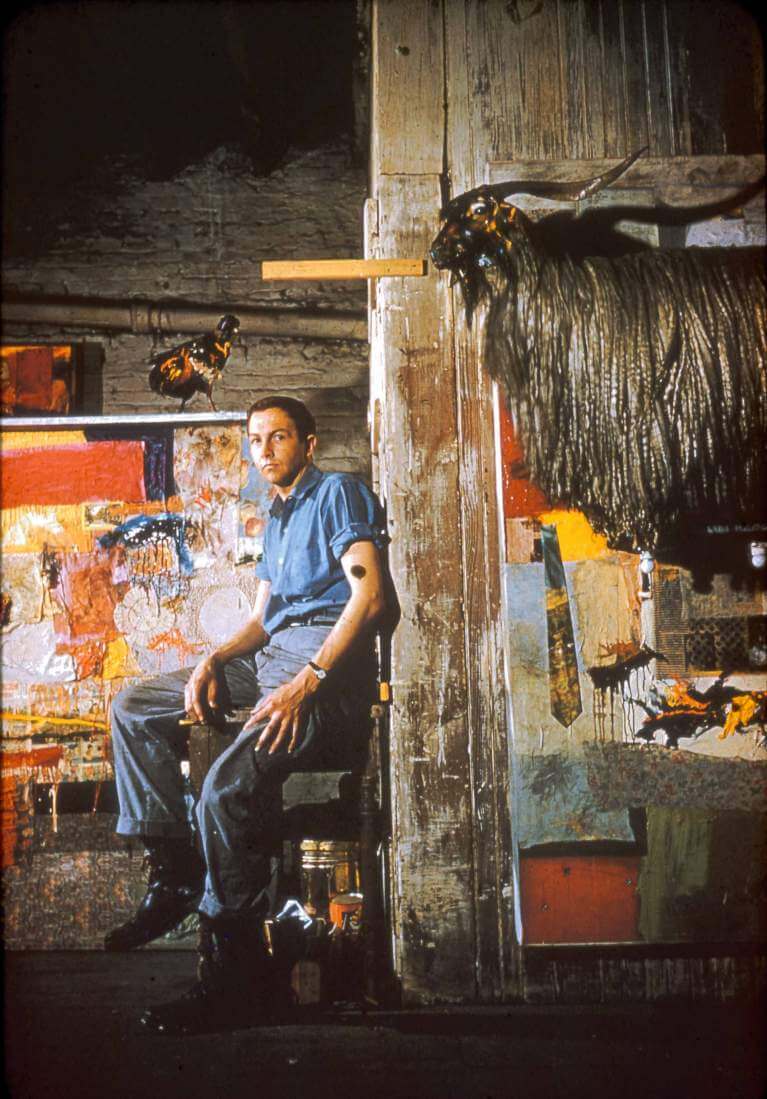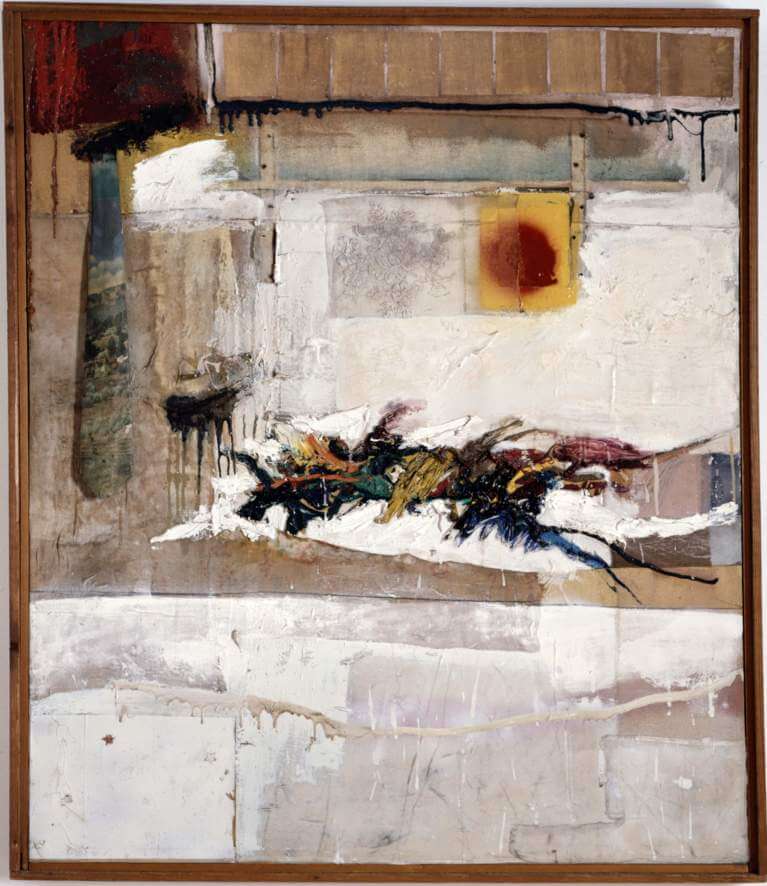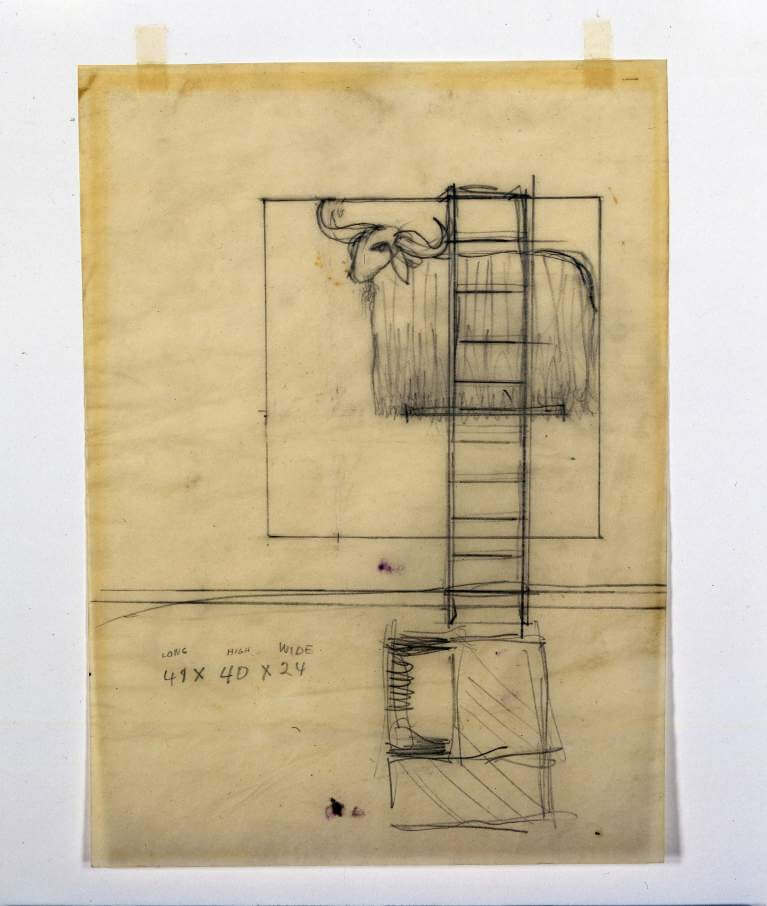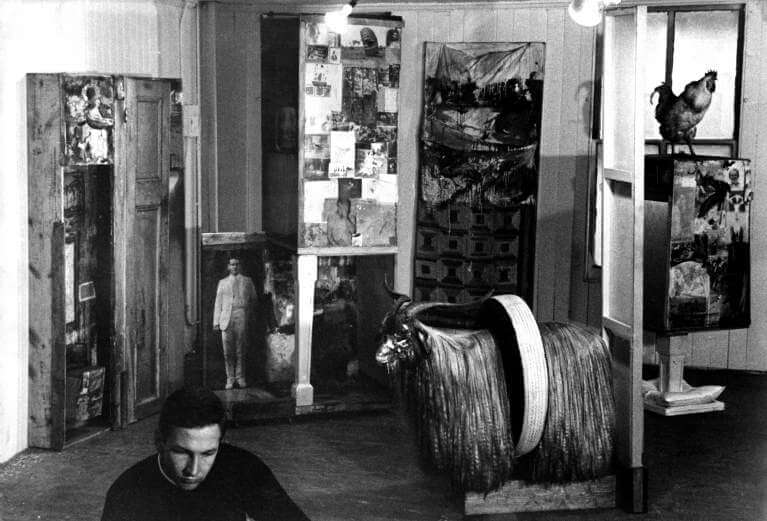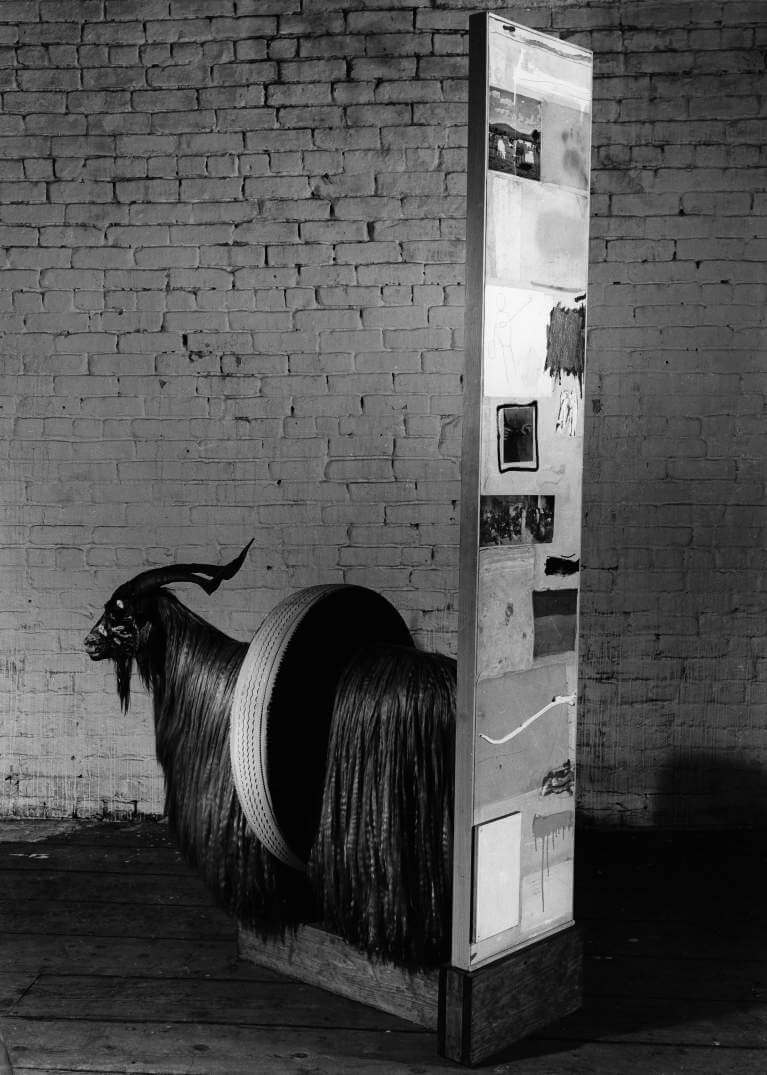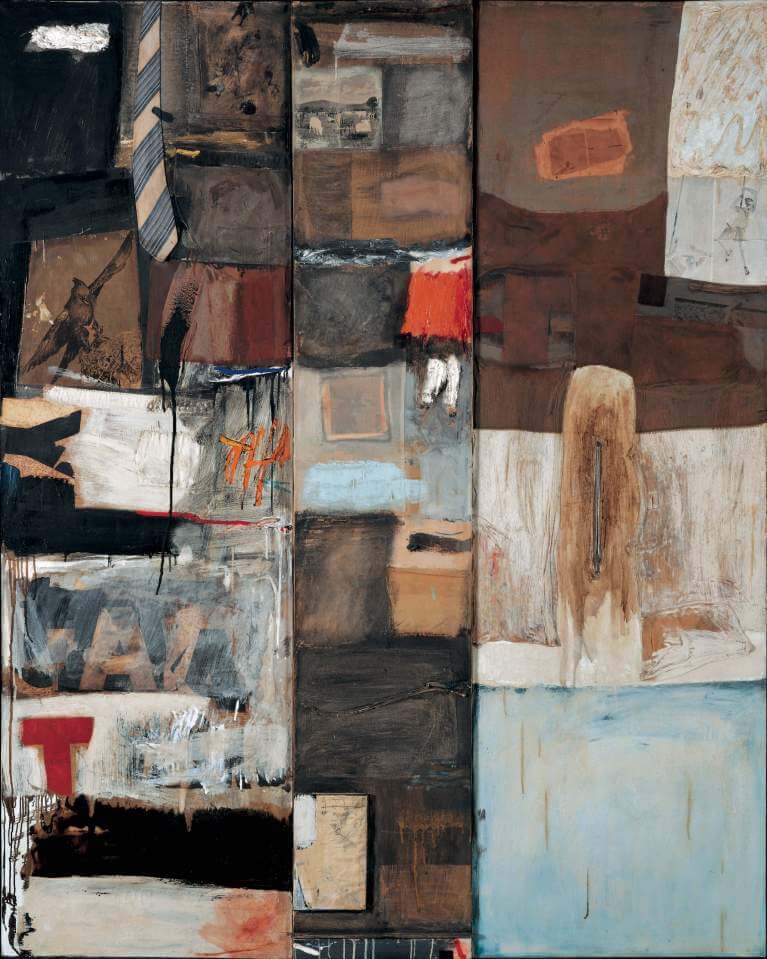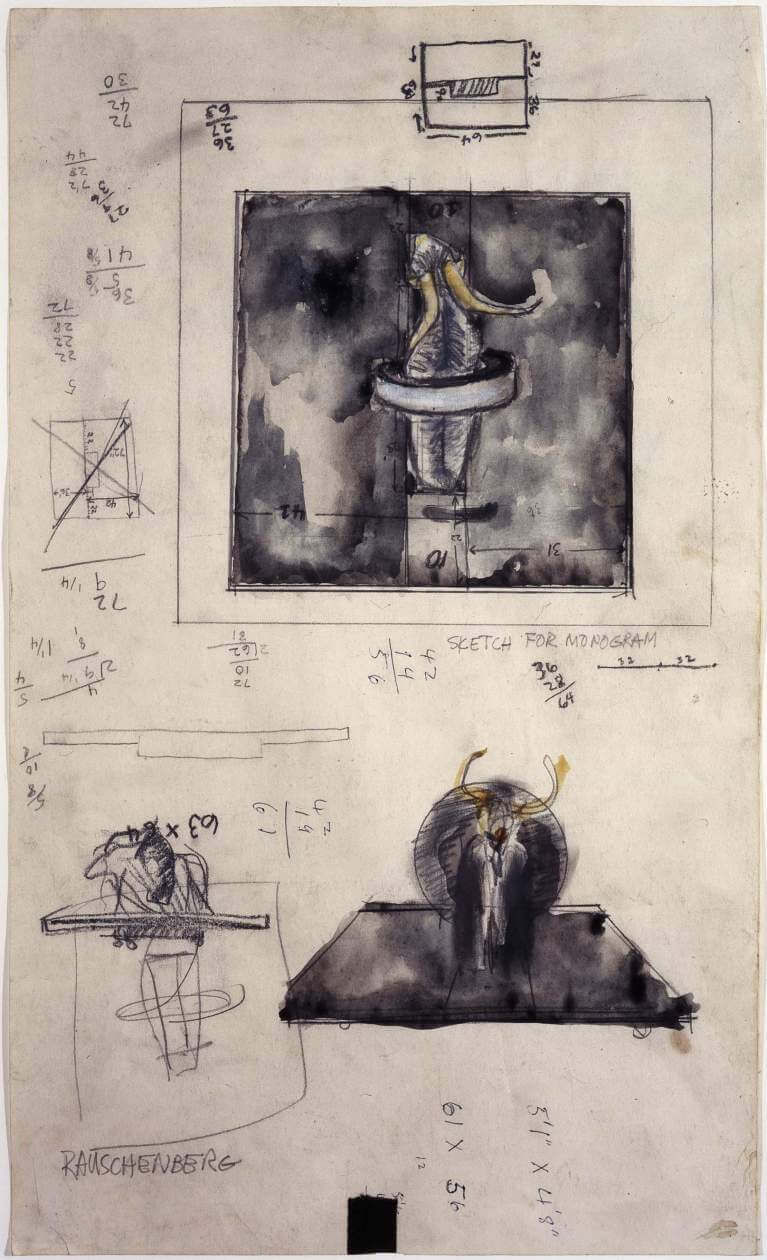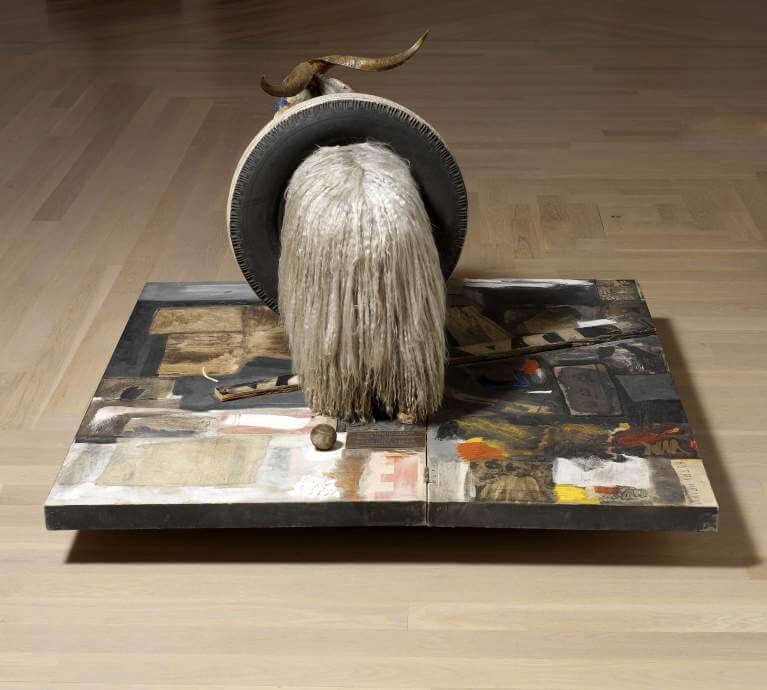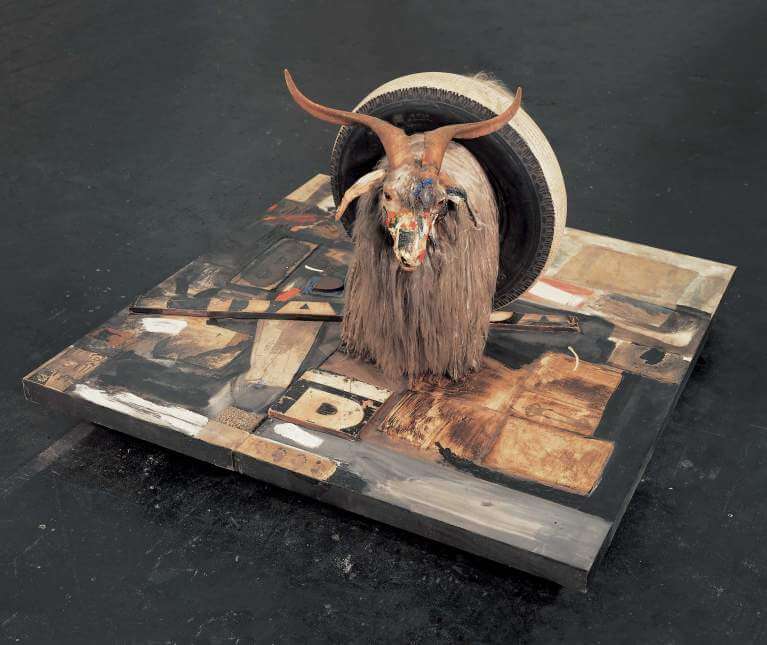
Monogram, 1955–59
Monogram
Monogram (1955–59) belongs to the series of Combines that Rauschenberg made between 1954 and 1964. A term coined by Rauschenberg, Combines merged aspects of painting and sculpture to become an entirely new artistic category. Art critic Leo Steinberg observed that the orientation of the Combines challenged the traditional concept of the picture plane as an extension of the viewers space, providing a window into another reality. Instead, Steinberg argued, a Combine is like a tabletop or bulletin board—a “receptor surface on which objects are scattered, on which data is entered.” Rauschenberg had seen the stuffed Angora goat—the focus of Monogram—in the window of a secondhand office-furniture store on Seventh Avenue in New York. Paying fifteen dollars toward the asking price of thirty-five dollars, Rauschenberg brought the goat to his studio, and before its completion in 1959, Monogram evolved through three states documented in drawings and photographs. The title is derived from the union of the goat and tire, which reminded Rauschenberg of the interweaving letters in a monogram.

